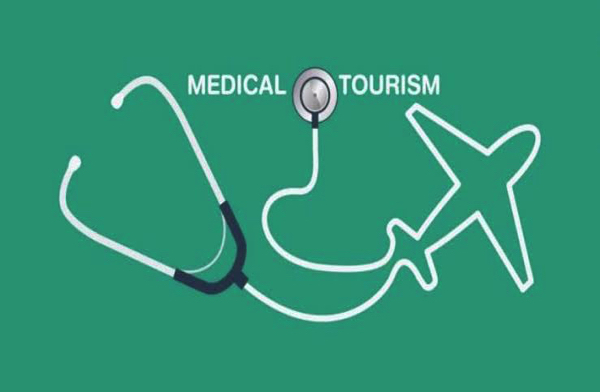By Virti Shah, Advocate
virtimshah@gmail.com | Nov 30, 2020
India has been a regional health care destination for its neighbouring countries such as Afghanistan, Bangladesh, Bhutan, Maldives, Nepal, Pakistan, and the Middle East since the last several years. India is considered a top medical tourism destination, along with Thailand and Singapore, largely because it boasts of advanced medical facilities, skilled medical practitioners – fluent in English – and cheaper treatment costs than in hospitals in the West. The Indian government is promoting medical tourism in many ways. Offering hospitals, marketing development assistance, allowing medical visas, setting up facilitation counters at major airports, launching a website to provide information on medical tourism in the country and constituting a National Medical and Wellness Tourism Board.
India enjoys a dominant position in the medical tourism industry, as evidenced by various statistics according to which, as of 2018, around five lakh foreigners visit India for medical and wellness purposes a year. The number almost doubled between 2015 and 2016. They bring over $25 billion in foreign exchange earnings. Owing to factors like a relatively lower cost of treatment, the abundance of medical health professionals and restorative health options in the form of AYUSH India is at a competitive advantage when it comes to medical tourism.
The scope of Medical Tourism:
India is widely known as a preferred, a low-cost destination for medical tourism among other Asian developing and African countries. In recent years, it has also emerged as a key destination even for citizens of Western countries. Medical tourism in India has a sweeping scope and can be said to cover wellness tourism, cosmetic surgery, advanced healthcare procedures and traditional age-old systems. in India like Ayurveda, Yoga, Unani, Siddha, and Homeopathy. It even covers within its ambit beauty treatments and fertilization procedures. It thus represents an amalgam of modern health care procedures and ancient treatment therapies synonymous with and/peculiar to India. In December 2011, Jack Jones, a Jehovah’s Witness whose faith barred him from having blood transfusions, made headlines for being the first US citizen to undergo a bloodless surgery in India.
Framework in India
Medical Visas
The Government of India recognizes and categorizes medical tourism as niche tourism. The government support towards medical tourism is evident by the introduction of a special category of visa catering to such a segment in the form of medical visa.
Such a visa is valid up to a period of one year or the period of treatment whichever is lesser. However, the prescribed period can be extended where required for another one year by the Ministry of Health Affairs on the recommendation of Foreign Regional Registration Offices and State Governments. In ordinary circumstances, only a maximum of three entries are permissible, the only exception to this being emergency cases where a special permission is to be sought by Foreign Regional Registration Offices or State Governments. Maximum of 2 Attendants/Family members including the spouse can also apply for an MX visa. Further impetus was the launch of e-visa facility for 43 countries in relation to medical tourism.
The conditions for grant of this kind of visa has been specifically laid down to ensure people who are immigrating to India are doing so in pursuance of receiving treatment. The person is to possess requisite medical record stating recommendation or reference of specialized treatment that is sought based on preliminary medical treatment in the home country and secondly, the treatment should be significant in character, for example, neurosurgery, heart surgery, joint replacement or plastic surgery.
The development of medical visa casts a duty upon hospitals and healthcare centres to not entertain tourists who seek medical treatment but have not applied for the medical visa and are visiting under the general tourist visa.
Conversion of Visas
Foreign nationals on a business visa or an employment visa in India can apply to convert their visas to a MV if they fall ill, are unable to travel and require specialized medical treatment in India. A change of visa may be required if the individual falls out of status, for example, if he is on an employment visa and the visa expires. Such individuals will be granted an MV provided they fulfil all the criteria to be eligible for an MV and can provide a medical certificate from a government or government-recognized hospital. In such cases, qualifying members of the principal applicant could apply for an MX, which is usually granted to co-terminate with the principle applicant’s MV. The MV and MXV will bear an endorsement stating that employment or business is not permitted.
Medical Visa is a result of the Government’s recognition of the importance of medical tourism in India. It enables individuals to enter the country to procure medical treatment on valid visas.
Medical malpractice laws in India
The medical malpractice laws in India with a focus on the Consumer Protection Act, 1986 (the “CPA”). There are various laws which are set up under the CPA, and are applied by Indian courts when dealing with medical malpractice cases, and the relevant factors are taken into consideration while awarding compensation, among other issues.
Consumer Protection Act
Briefly stated, a “consumer” who hires or avails of any “services” for consideration is entitled under the CPA to sue for any “deficiency in service” (not being services rendered free of cost or of a personal nature) and claim compensation. “Deficiency” is usually construed to mean any fault, imperfection, shortcoming or inadequacy in the quality, nature and manner of performance of any service.
Until 1996, legal proceedings against doctors for malpractice were relatively few. However, the decision of the Supreme Court of India in Indian Medical Association v. V. P. Shantha (AIR 1996 SC 550) brought doctors and hospitals under the purview of the CPA. After this judgment, doctors and hospitals were allowed to be sued under the CPA for any ”deficiency in service.”
Filing Actions That Can Be Taken Under CPA
The aggrieved person would have recourse to the specially created consumer disputes redressal fora established under the CPA to establish any malpractice of a doctor or hospital and claim compensation.
Depending on the value of the services and/or the compensation claimed, the aggrieved person would have to approach (i) the District Consumer Dispute Redressal Forum (pecuniary limit of up to INR 2,000,000 or approx. USD 40,000); (ii) the Consumer Disputes Redressal Commission of each Indian State or province (the “State Commission”) (which enjoys pecuniary limit above INR 2,000,000 but up to INR 10,000,000 i.e., between approx. USD 40,000 to 200,000); (iii) or the National Consumer Disputes Redressal Commission, New Delhi (the “National Commission”) (pecuniary limit of any amount above INR 10,000,000 or approx. USD 200,000).
When there is a violation of duty and action
Having established the duty and standard of care, the aggrieved patient has to prove that there was a breach of the applicable duty and that the doctor had fallen below the accepted standard of care. The violation of the duty should then be linked to ‘action’, i.e. a link should be established between the act of negligence and the injury suffered by the patient.
Indian courts have applied the ‘but for’ test in order to establish causation. In Geetu Sapra v. B. L. Kapoor Memorial Hospital [(2006) 3 CPJ 1], the ‘but-for’ test was applied to establish that if not for the defective equipment in the hospital, the patient would have not suffered the injury. In Samira Kohli v. Prabha Manchanda [(2008) 2 SCC 1] which deals with “informed consent,” the Supreme Court held that a doctor can be held negligent if proper consent is not taken and the failure to take consent is sufficient to determine causation.
Hospitals could be held liable
In India, corporate hospitals (as opposed to government or village hospitals, which are unlikely to attract medical tourism) have been held liable by applying the tort law principle of ”vicarious liability” for any malpractice or ”deficiency in service” on the part of the doctors or nurses employed in such hospitals. Indian courts have ruled that a hospital cannot escape liability merely by arguing that it only provides infrastructural facilities and services of nursing and support staff to the consultant doctor and that the hospital cannot perform or recommend an operation on its own [Rekha Gupta v. Bombay Hospital Trust and Another (2003) 2 CPJ 160)].
Compensation under the CPA
If it is determined that a doctor or hospital had been negligent, the aggrieved person is entitled to claim damages or compensation under the CPA. While determining the amount of compensation to be awarded under the CPA, Indian courts normally take into consideration the following key factors:
• Pain and suffering endured by the patient (including the duration and intensity) as a result of the negligence of the doctor;
• Loss of earnings or future earnings; and
• Expenses incurred for the medical treatment.
Recently, the National Commission in Kunal Saha v. Sukumar Mukherjee and Others [Original Petition No. 240 of 1999], awarded compensation of INR 13,465,750 (approx. USD 270,000) to the plaintiff, out of which the hospital was directed to pay a sum of INR 4,040,000 (approx. USD 80,800) and the remaining amount by the defendant doctors. The National Commission apportioned liability based on the degree of negligence of each doctor and the hospital. In this case, the hospital was found to be one of the main negligent parties.
Execution Proceedings And Remitting Compensation Abroad
Under Indian law, upon award of final compensation (i.e., all appeal remedies have been exhausted), if the defendant has not voluntarily rendered compensation, the aggrieved party is entitled to commence proceedings to execute the award. In such proceedings, the court is empowered to seize and sell (by public auction) any property belonging to the defendant to ensure that the aggrieved person is paid due compensation. Courts are also empowered to imprison the defendant for any non-payment of the award.
In cases involving foreigners, since the proceedings are in India, a concern relates to actual remittance and receipt of the awarded compensation amount by the foreigners abroad. In this regard, it is pertinent to note that India’s foreign exchange laws have been substantially liberalised over the years. It is now possible for bankers to rely on court orders to allow the defendants to remit the compensation amount to the aggrieved person abroad.
Criminal Negligence Of Doctors
In India, in addition to an action under the CPA, a doctor can also be liable under penal laws for criminal negligence. This happens if such a doctor is shown to have been rash and negligent, resulting in the death of the patient [Section 304A of the Indian Penal Code]. A person convicted under Section 304A may be subject either too simple or rigorous imprisonment for a term of up to two years, or with fine, or with both.
India is equipped with skilled professionals, comparatively lower cost of medical treatment and supported by various government initiatives. These factors are conducive to the development of medical tourism in India. The entire rationale of medical tourism is driven by the costs, aspects of safety, ethical practice, credibility and legal issues arising from medical negligence and malpractice are often are put on the backburner. The growth of medical tourism in India, therefore, will be incumbent on the effectiveness of the regulatory framework. This protects the interests and rights of patients and monitors hospitals and healthcare institutions.








It’s wonderful that you are getting thoughts from this
post as well as from our discussion made at this time.
Thanks very nice blog!